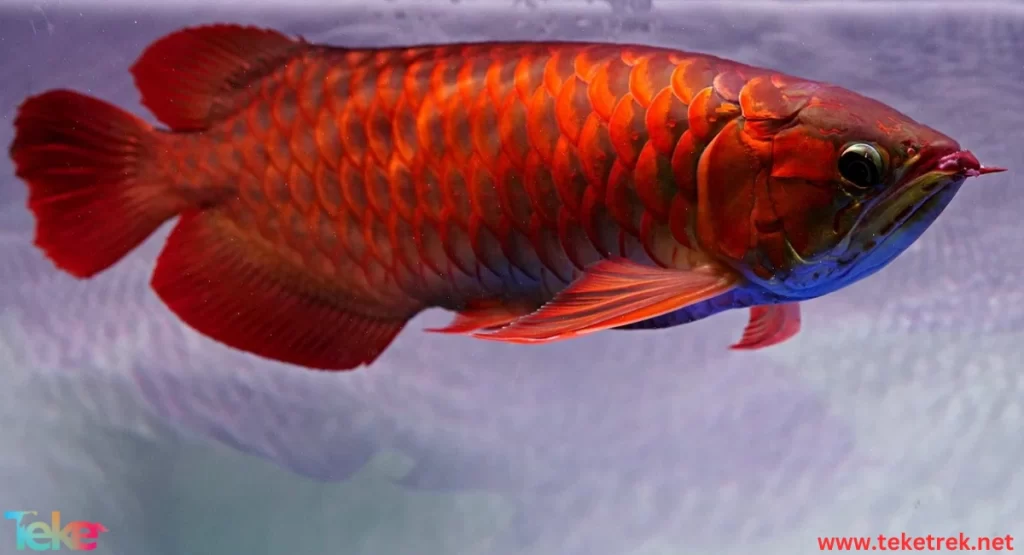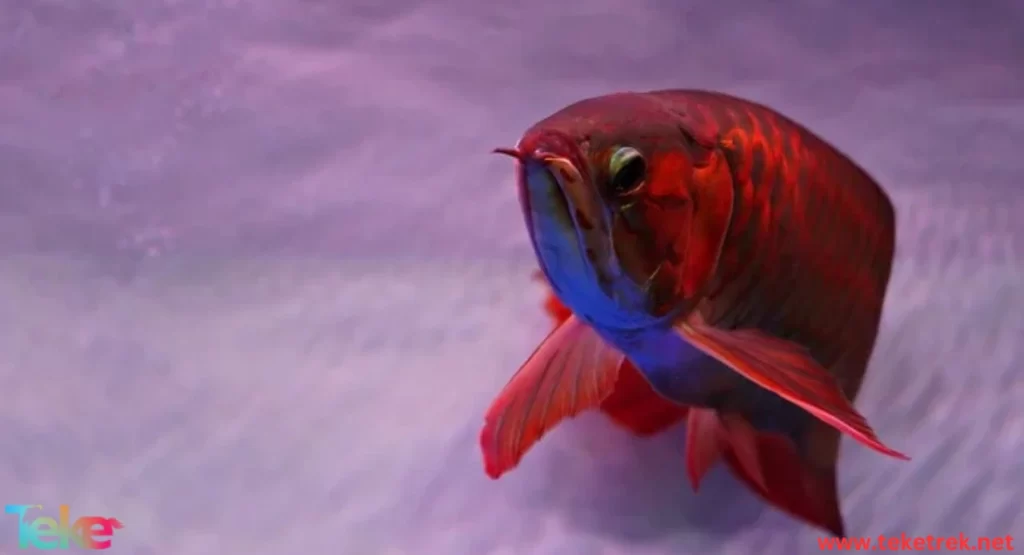The scientific name of the arowana fish is Osteoglossum BICIRHOSUM, and it belongs to the Actinopterygii family, Chordata phylum, Vertebrate phylum.
Arowana Fish: Freshwater Giants of the Amazon
These fish are freshwater species that live in the Amazon River, known for their peculiar shape and some unique habits. In this article from teketrek, you will learn about the Arowana fish and their lifestyle.
Habitats of the Arowana:
The original habitat of the Arowana fish is the drainage system in the Amazon region, western Orinoco, and the Rupununi and Essequibo systems in the Guiana Islands.
When Arowana fish are found elsewhere, it is due to human interventions, as they have been introduced in isolated areas in California and Nevada.
Arowanas are aquatic, found in the Amazon region in the floodplains of white and black waters, and are most abundant in floodplains and swamps.
Arowana fish are usually found in shallow water due to their predatory behavior.

Physical Characteristics of the Arowana:
Arowana fish are distinguished by their remarkable scale arrangements, where the scales are large, strong, bony, and decorated in a way that forms radial patterns.
The scales are silvery pearlescent in color, changing to red, blue, and green as the fish age.
They are also known for their bony tongue, which is named after them.
Arowana fish carry many mouth bones as teeth, including the jaw, palate, tongue, and pharynx.
The maximum length of Arowana fish is about 120 cm, and their maximum weight is 6 kilograms.
Reproductive Stages of the Arowana:
Arowana fish spawn at the beginning of the floods, which means December and January.
Females give few large eggs.
Males carry the eggs, larvae, and young in their mouths until the yolk sac is absorbed, about two months.
These fish breed once a year.
What is the Behavior of the Arowana?
Arowana fish have a unique predatory behavior, staying close to the shore and waiting for prey to swim near them.
They usually stay beside a fallen tree to hide, then attack their prey, which typically involves jumping out of the water, either to catch large insects or other fish or small birds on low-hanging branches.
To catch prey, the Arowana fish fold their body into an “S” shape and then suddenly bend to propel themselves out of the water, up to a height of more than a meter.
If the Arowana fish swim in oxygen-poor water, they can breathe air directly from the water surface.
The Arowana Diet: What do Arowana fish eat?
Arowana fish are carnivorous animals and consume anything they can prey on.
In a study of their stomach contents, the majority of the food was insects, spiders, beetles, as well as crustaceans, snails, fish, birds, snakes, and even monkey feces and plant materials.
Economic Importance to Humans:
Arowana fish have significant economic value for some countries, as these fish provide the largest source of protein compared to other Amazon fish.
Arowana fish are considered the most digestible and least likely to cause diseases due to their low-fat content.
Arowana fish are also of great value in the aquarium trade, as evidenced by their sale on many commercial websites.
Frequently Asked Questions About Arowana Fish:
- Where can Arowana fish be found?
Arowana fish are freshwater fish that live in the Amazon River and its main tributaries.
Arowana fish spread in the floodwaters of the Amazon rainforest during the rainy season.
- How can one recognize Arowana fish?
The mouth of the Arowana fish is directed upwards to catch prey on the surface.
- What is special about Arowana fish?
In the case of the Arowana, fertilization is external.
Their specialty lies in the fact that the male collects the fertilized eggs and keeps them in his mouth.
The juveniles stay there for a while for protection.
The incubation period is six weeks including the protection period.
Therefore, the male has a fleshy lower lip and small teeth, unlike the females.
- What is the cultural value of Arowana fish?
Arowana fish have a special cultural value in Chinese culture, where they are believed to resemble the Chinese dragon.
- How long can Arowana fish live?
Arowana fish can live up to 20 years and grow at a rate of 5 cm per month.

In conclusion
Thanks to its shiny color and agile movement, the Arowana has become one of the most preferred fish in ornamental tanks. However, maintaining Arowana fish requires special attention and precise knowledge of their environmental and nutritional needs to ensure their growth and prosperity in captivity.
Despite their attractiveness and charm, Arowana fish face challenges related to preserving their natural habitats, due to environmental changes and overfishing.
Therefore, protecting this wonderful species requires joint efforts from the international community to maintain the balance of its natural environment and ensure its continuity for future generations.
In the end, the Arowana fish reflect the rich biological diversity of our planet, and the importance of preserving this diversity to ensure a sustainable future for nature.
References





